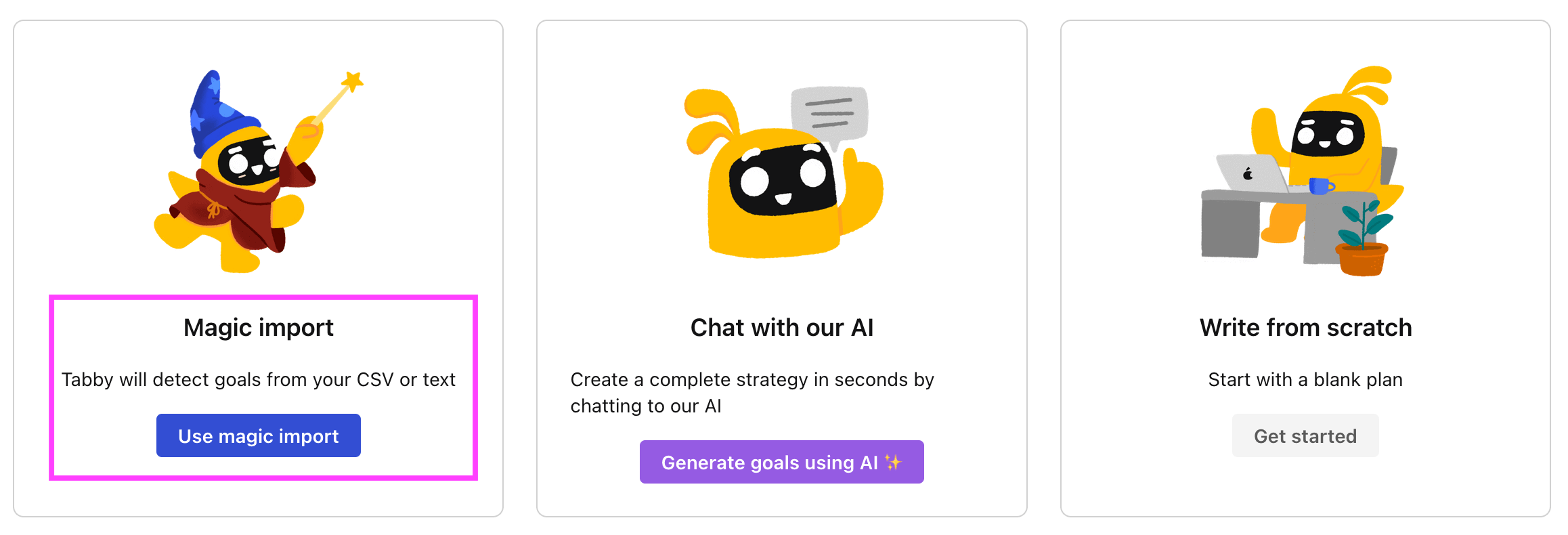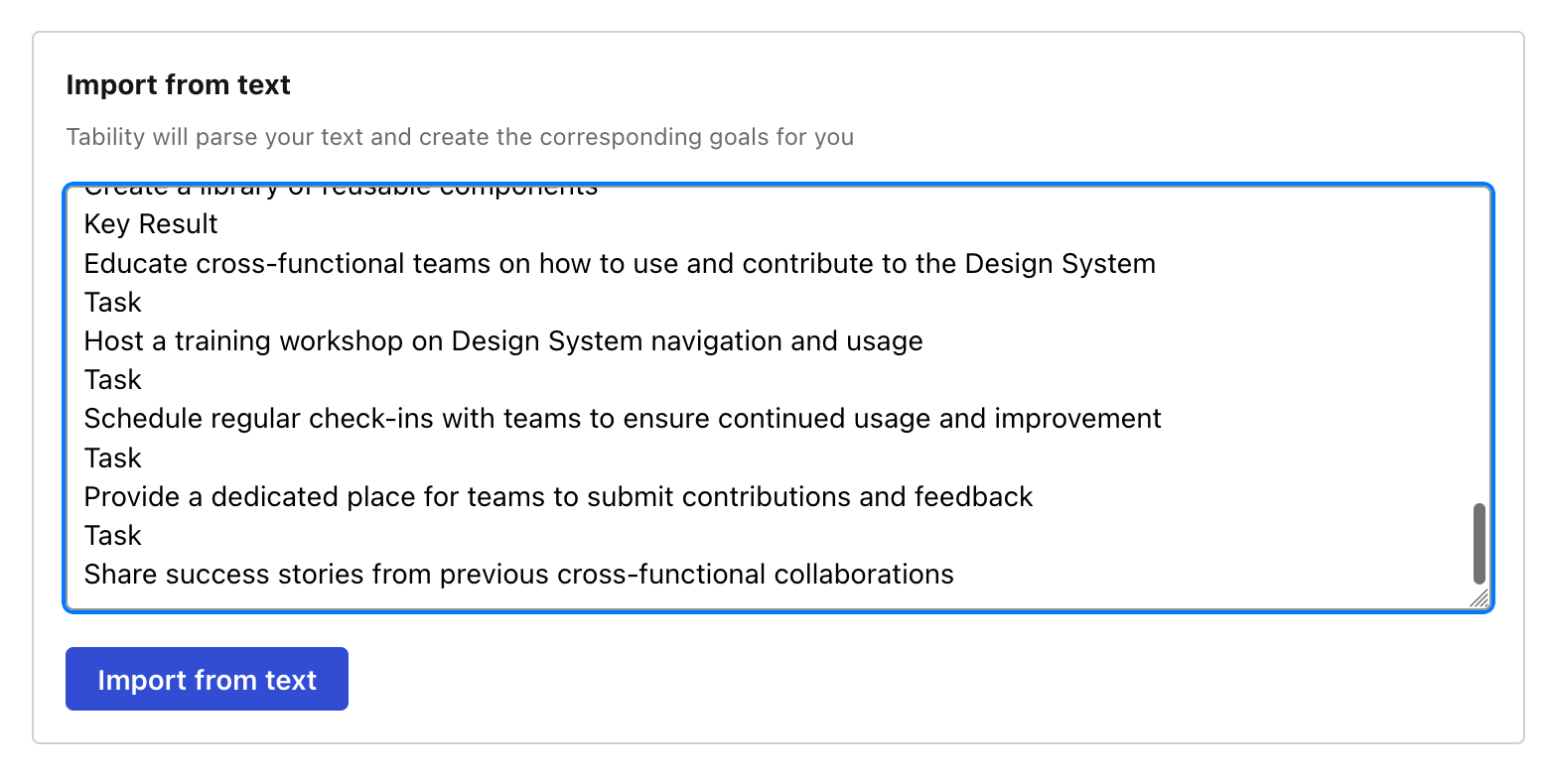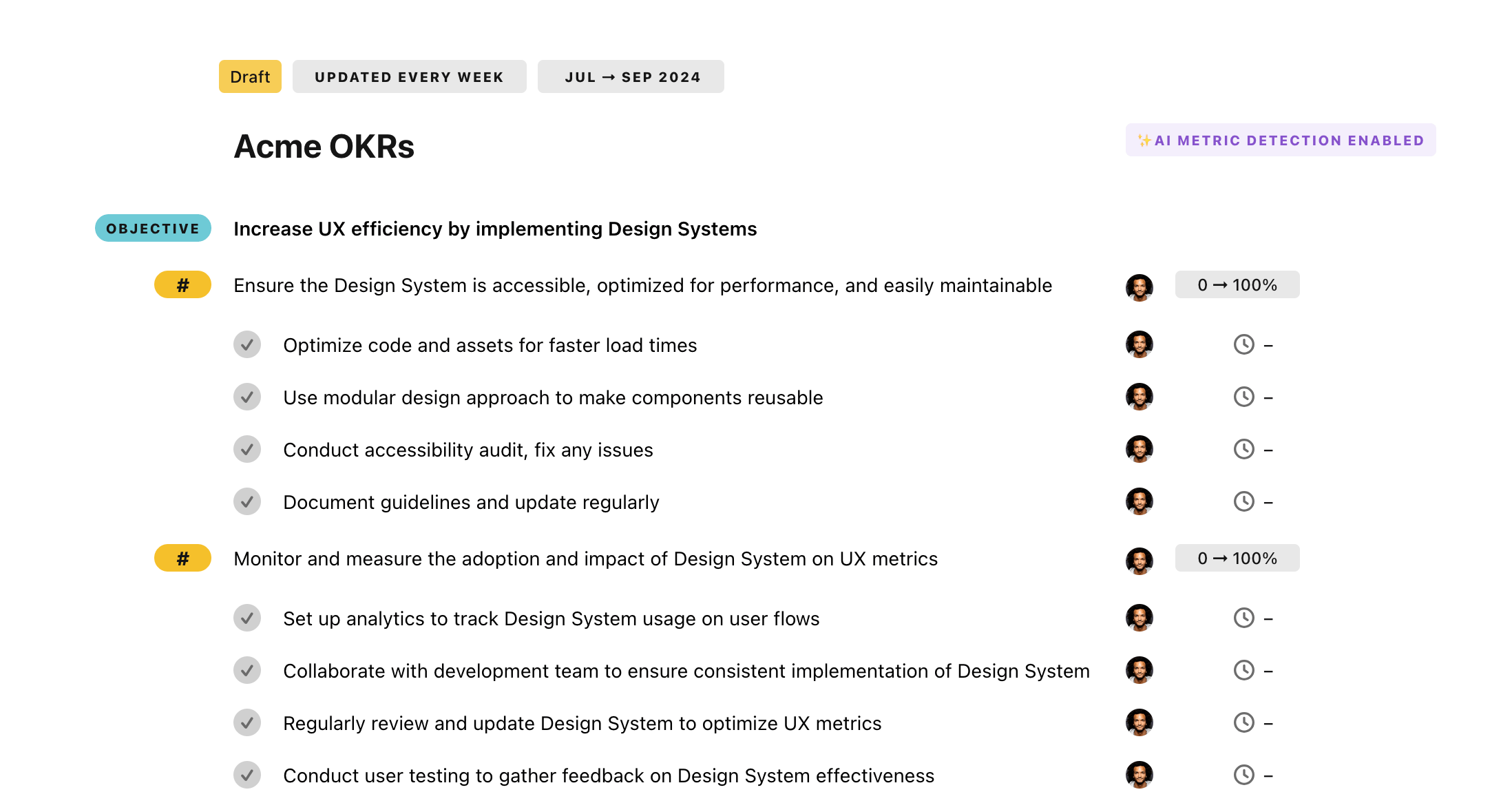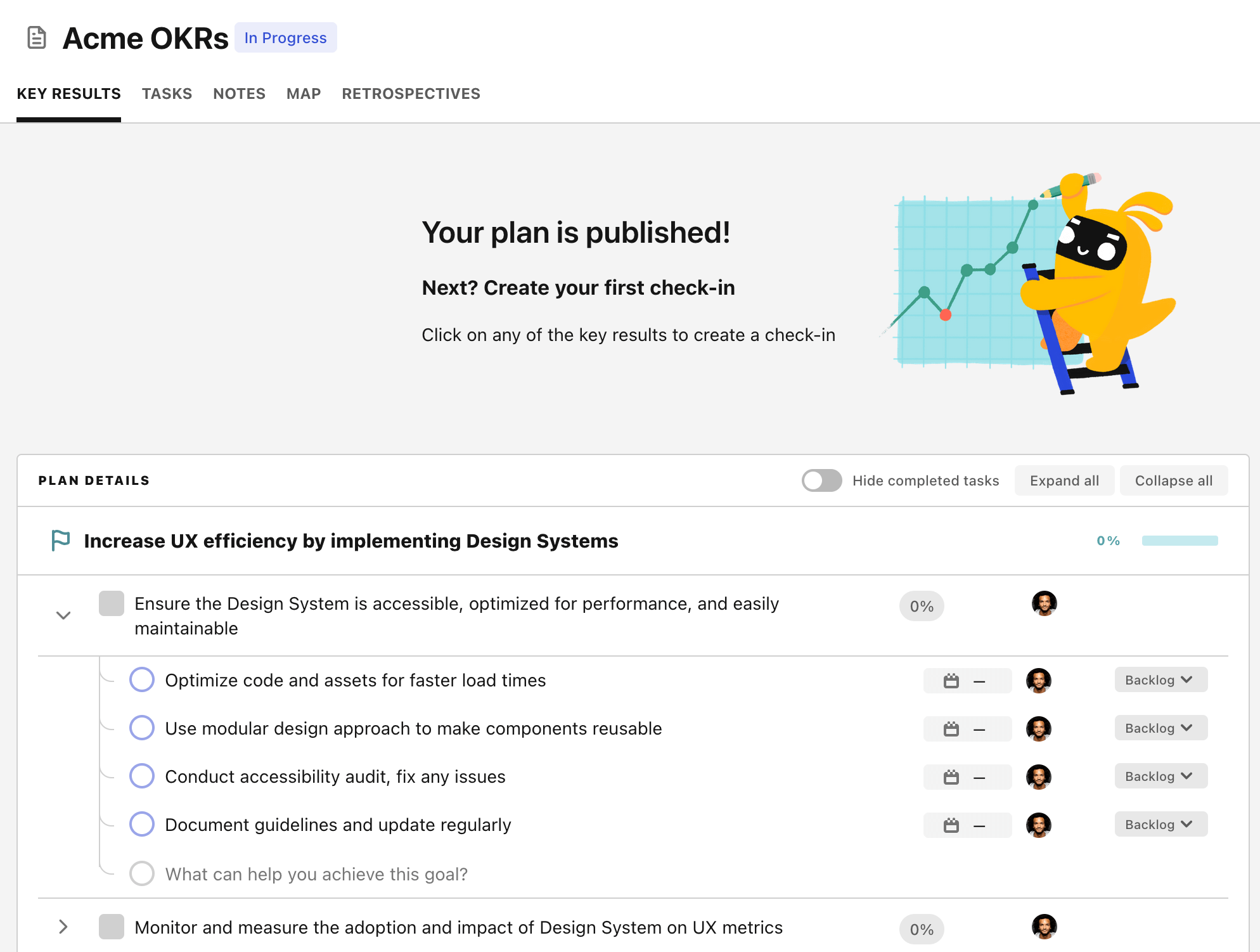OKR template to enhance system security for robust protection
Your OKR template
The OKR also targets a reduction in security breaches by 20% through improved authentication measures. The initiatives proposed include training employees to recognize and avoid phishing attacks, implementing a two-factor authentication system for all users, enhancing password requirements, and conducting regular security audits.
Improving application vulnerability is another key objective. It’s aimed at reducing critical security issues by 15%. The action plan includes secure coding practice training for developers and staff, routine security audits, vulnerability assessments, software updates and stricter access controls for application access.
Increasing employee awareness about security is the last objective and it aims for a 100% completion rate for mandatory security training. This will be achieved by enforcing deadlines for training completion, creating engaging training programs, regular assessments, and providing a digital platform for easy access to training.
ObjectiveEnhance system security for robust protection
KRAchieve a 95% score in independent security audits validating system security protocols
Implement necessary updates and enhancements to address identified security gaps
Collaborate with external security experts to perform comprehensive security audits
Conduct thorough review of current security protocols and identify areas for improvement
Continuously monitor and evaluate system security measures to maintain a 95% audit score
KRReduce number of security breaches by 20% through enhanced authentication measures
Train employees on best practices for recognizing and avoiding phishing attacks
Implement two-factor authentication system for all users
Enhance password requirements and enforce regular password updates
Conduct regular security audits to identify vulnerabilities and address them promptly
KRImprove application vulnerability by reducing critical security issues by 15%
Train developers and staff on secure coding practices and security best practices
Implement regular security audits and vulnerability assessments on the application
Update and patch software and libraries regularly to address security vulnerabilities
Implement stricter access controls and enforce strong password policies for application access
KRIncrease employee awareness through mandatory security training with 100% completion rate
Enforce strict deadlines and reminders to ensure all employees complete the security training
Create an engaging and interactive security training program for all employees
Evaluate the effectiveness of the security training program by conducting regular assessments
Implement a digital platform for employees to easily access and complete security training
How to edit and track OKRs with Tability
You'll probably want to edit the examples in this post, and Tability is the perfect tool for it.
Tability is an AI-powered platform that helps teams set better goals, monitor execution, and get help to achieve their objectives faster.
With Tability you can:
- Use AI to draft a complete set of OKRs in seconds
- Connect your OKRs and team goals to your project
- Automate reporting with integrations and built-in dashboard
Instead of having to copy the content of the OKR examples in a doc or spreadsheet, you can use Tability’s magic importer to start using any of the examples in this page.
The import process can be done in seconds, allowing you to edit OKRs directly in a platform that knows how to manage and track goals.
Step 1. Sign up for a free Tability account
Go tohttps://tability.app/signup and create your account (it's free!)
Step 2. Create a plan
Follow the steps after your onboarding to create your first plan, you should get to a page that looks like the picture below.

Step 3. Use the magic importer
Click on Use magic import to open up the Magic Import modal.
Now, go back to the OKR examples, and click on Copy on the example that you’d like to use.

Paste the content in the text import section. Don’t worry about the formatting, Tability’s AI will be able to parse it!

Now, just click on Import from text and let the magic happen.

Once your example is in the plan editor, you will be able to:
- Edit the objectives, key results, and tasks
- Click on the target 0 → 100% to set better target
- Use the tips and the AI to refine your goals
Step 4. Publish your plan
Once you’re done editing, you can publish your plan to switch to the goal-tracking mode.

From there you will have access to all the features that will help you and your team save hours with OKR reporting.
- 10+ built-in dashboards to visualise progress on your goals
- Weekly reminders, data connectors, and smart notifications
- 9 views to map OKRs to strategic projects
- Strategy map to align teams at scale